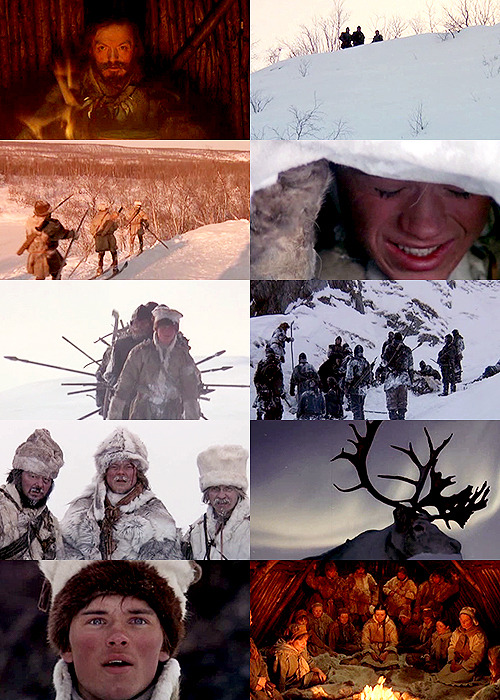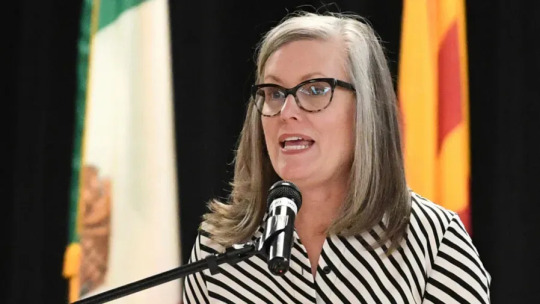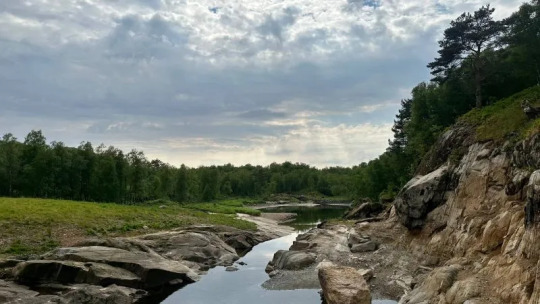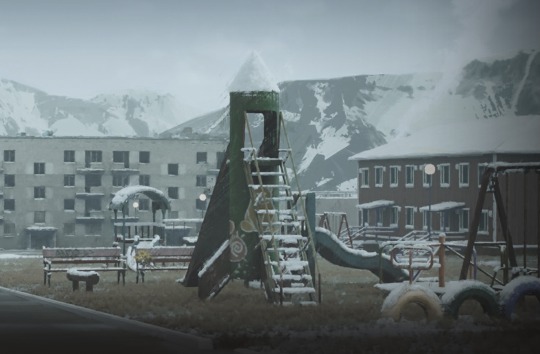#norway '60
Explore tagged Tumblr posts
Text

Eurovision Song contest rehearsals in London 28th March 1960 From left to right: Anita Traversi (Switzerland) , Siw Malmkvist (Sweden) , Katy Bodtger (Denmark) , Nora Brockstedt (Norway) [x]
#eurovision#eurovision 1960#esc#esc 1960#photo#op#anita traversi#siw malmkvist#katy bodtger#nora brocksetdt#switzerland#switzerland '60#sweden#sweden '60#denmark#denmark '60#norway#norway '60#60s
27 notes
·
View notes
Text

First day of school
Lilleborg school, 1962
28 notes
·
View notes
Text

Moxey
#Moxey#production#studio#videos#films#moving pictures#storyteller#Stavanger#Norway#portfolio#typography#type#typeface#font#FF Blur#Exposure 60#website#web design#inspire#inspiration#happywebdesign
13 notes
·
View notes
Text
Del’s Favourite Songs Poll: 2000s
Honestly this could have all been 2007
Songs under the cut:
youtube
youtube
youtube
youtube
youtube
#eurovision#favourite song polls#confession time: I have been (mostly) avoiding songs that were in unibrowzz polls#I mean I had Luxembourg 1966 but there's not that many songs in the 60s to pick from#but I did briefly consider Norway 1986 for the 80s poll#and did avoid Sweden when trying to pick which two 2007 songs I'd go for in this one for that reason#decided to do it this way cause I already gushed about those songs in the tags and I want to share some other faves of mine
9 notes
·
View notes
Text

Pathfinder (1987). A young Sámi man witnesses a band of vicious raiders slay his family and flees to a nearby village, where he learns he must become a Pathfinder.
Watching this for the Oscars Project (it was nommed for Best Foreign Language Film in '88!), I didn't realise until afterwards the film's significance in helping preserve the Sámi language and culture - wonderful! I love the capacity cinema has in sharing history, language and cultural dialogue, particular those which have been silenced by colonialism.
Also! This is great! A really thrilling adventure, albeit a straightforward one. There's a real warmth between many of the dynamics - a nice contrast to the icy surrounds - and it beautifully folds together folklore and realism to tell just a really good story. Highly recommend it! 8/10.
#pathfinder#1987#Oscars 60#Nom: Foreign FIlm#historical#norwegian#norway#sami#1000 ad#coming of age#spirituality#8/10#Nils Gaup#mikkel gaup#Nils Utsi#Anna Maria Blind
16 notes
·
View notes
Text
this dynamic between me and my teacher is getting really funny
#we were yapping to each other all of dinner#but then she had to yap at me because i (teenage athlete type) got 2 meals basically and she (60 year old) got a side of brussels sprouts#i was like fuck shes gonna be waiting while im finishing my food i better eat quick#did this make me look like more of a clown. maybe#she seems happy that i can coach myself wrt spelling because she would obviously rather be in europe and not teaching#i cant count the number of times shes brought up like. paris or norway today#oh and like half the restaurant was staring at me as i was walking out bc i didnt have a hand for my carabiner (VERY LOUD)#so i was like. jingling across the floor with my takeout box 🚶♂️#also shes more directionally challenged than my brother so im the one who has to remember where the car is
2 notes
·
View notes
Text

The Stones in Norway: https://youtu.be/JGwsyWw_ik4?si=HHfhIMpIgkfuiWSv
#the rolling stones#Brian Jones#Keith Richards#Mick Jagger#1960s music#1960s rock#60s rock#60s music#classic rock#27 club#Norway
1 note
·
View note
Text

#80s#911 abc#aesthetic#agatha harkness#60s#70s#1950s#agatha all along#alternative#animals#india#indian#india travel#india tourism#india love#delhi#godkabir#bhutan#mumbai#punjab#pakistan#bangladesh#summit#local#united#indias#austria#europe#norway#germany
1 note
·
View note
Text


5 notes
·
View notes
Text



Sky at midnight. Top photo is a week before the solstice, and middle and bottom photos are a week after.
#actual day of was overcast#so I don't have photos from then#photography#photographers on tumblr#digital photography#norway#norge#bergen#midnight sun#sort of#it does set here (~60°N)#but not until after 23:00 right now#and then rises again a bit after 04:00#so is does not get *dark* dark right now
0 notes
Text
On May 12, 1969, Barbarella debuted in Norway.

Here's some new punk patch art inspired by the film's Japanese poster typography!
#barbarella#roger vadim#science fiction movies#science fiction#sci fi#fantasy adventure#tcm underground#monstervision#japanese#typography#science fiction film#science fiction art#sci fi movies#sci fi art#60s sci fi#1960s#60s movies#movie art#art#drawing#movie history#pop art#modern art#pop surrealism#portrait#cult film#typography art#punk patches#stencil#norway
1 note
·
View note
Text
There was soft carpeting, upholstered furniture, and real porcelain toilets.
"Humankind: A Hopeful History" - Rutger Bregman
#book quote#humankind#rutger bregman#nonfiction#carpeting#soft carpet#upholstery#the radical humaneness of norway's halden prison#jessica benko#prison reform#american politics#1960s#60s#20th century
0 notes
Text
The Best News of Last Week
1. Arizona governor Ok's over the counter birth control

Arizona Gov. Katie Hobbs (D) has expanded access to over-the-counter birth control that will “soon be available to Arizonans,” according to a press release.
Arizonans 18 and older will soon be able to go to their local pharmacy and purchase oral contraceptives without a doctor’s prescription.
2. ‘Great news’: EU hails discovery of massive phosphate rock deposit in Norway

A massive underground deposit of high-grade phosphate rock in Norway, pitched as the world’s largest, is big enough to satisfy world demand for fertilisers, solar panels and electric car batteries over the next 50 years, according to the company exploiting the resource. About 90% of the world’s mined phosphate rock is used in agriculture for the production of phosphorous for the fertiliser industry, for which there is currently no substitute.
3. U.S. Is Destroying the Last of Its Once-Vast Chemical Weapons Arsenal

Decades behind its initial schedule, the dangerous job of eliminating the world’s only remaining declared stockpile of lethal chemical munitions will be completed as soon as Friday.
4. Chinese scientists create edible food packaging to replace plastic

By incorporating certain soy proteins into the structure, Chinese University of Hong Kong scientists successfully created edible food packaging.
5. World's 1st 'tooth regrowth' medicine moves toward clinical trials in Japan

A Japanese research team is making progress on the development of a groundbreaking medication that may allow people to grow new teeth, with clinical trials set to begin in July 2024. The tooth regrowth medicine is intended for people who lack a full set of adult teeth due to congenital factors.
6. No Longer Endangered: The Bald Eagle is an Icon of the ESA

When the Endangered Species Act (ESA) was enacted in 1973, bald eagle population numbers across the country showed that the species was close to disappearing. Before the ESA, in the 1950s and ‘60s, eagles were shot routinely despite the protection. The ESA listing helped bring public attention to the issue.
Through the early 1970s and into the early ‘80s, numbers increased gradually. Then, as you got into the ‘90s, there was still gradual growth. From the late ‘90s into the 2000s, the population really exploded. There was a doubling rate of every several years or so for a while.
7. Deforestation in Brazil's Amazon drops 34% in first half 2023

Deforestation in Brazil's Amazon fell 34% in the first half of 2023, preliminary government data showed on Thursday, hitting its lowest level in four years as President Luiz Inacio Lula da Silva institutes tougher environmental policies.
Data produced by Brazil's national space research agency Inpe indicated that 2,649 square km (1,023 square miles) of rainforest were cleared in the region in the half year, the lowest for the period since 2019.
----
That's it for this week :)
This newsletter will always be free. If you liked this post you can support me with a small kofi donation:
Support this newsletter ❤️
Also don’t forget to reblog.
5K notes
·
View notes
Text
Limahl - The NeverEnding Story 1984
"The NeverEnding Story" is the title song from the English version of the 1984 film The NeverEnding Story. It was produced and composed by Italian musician Giorgio Moroder and performed by English pop singer Limahl. He released two versions of the song, one in English and one in French. The English version featured vocals by Beth Andersen, and the French version, "L'Histoire Sans Fin", featured vocals by Ann Calvert. It was a success in many countries, reaching #1 in both Norway and Sweden, #2 in Austria, West Germany and Italy, #4 in the UK, #6 in Australia and on the US Billboard Adult Contemporary chart. The song was composed by Giorgio Moroder with lyrics by Keith Forsey, though it (and other electronic pop elements of the soundtrack) is not present in the German version of the film, which features Klaus Doldinger's orchestral score exclusively. In the final episode of the third season of Stranger Things, set in 1985, "The NeverEnding Story" is sung by Dustin and his long-distance girlfriend Suzie as a way to reconnect after not seeing each other for some time. Following the season's release on July 4, 2019, interest in "The NeverEnding Story" surged; viewership of the original music video had increased by 800% within a few days according to YouTube (not linked to here), while Spotify reported an 825% increase in stream requests for the song. It recieved a total of 68,2% yes votes!
youtube
1K notes
·
View notes
Text
Lore details I've noticed: Farewell Rayashki event
As always that's mostly Russian/USSR/Slavic stuff and some translations, feel free to add anything. I've also made a post about Silver Knot lore details
Obviosly, spoiler warning
Alenka - a USSR chocolate type produced since 1965, they are quite soft and sweet and still popular among kids and adults

The playground is quite typical for the time period. The drawings and sunflowers might be Vila’s and kids’ work. It’s not very clear if the graffiti is made by someone inspired by hip-hop culture or is August’s failed attempt at scribbling out his name, judging by “А” and “Г” as 1st and 3rd letters. The only thing I’d add here is more scraped parts recycled into playground constructions

Ijirak, Kikituk, Qiqirn - creatures from Inuit folklore (as far as I know they are not known in native Siberian folklore). I haven’t found information about Hoituk
The Russian word for “most” means “best” in the phrase “the most “most”” (“самый-самый”)
“It was only by luck that we found the runium. For over 60 years, people here have worked together to make it what it is now” - Vila. If the events happen in 60s-80s (judging by the overall vibe), than the last time reverse was at 1977 and Rayashki started to grow from a village to a town at 1917 or later. It means the town exported runium for all the Soviet years.
⬆️ EDIT: Silver Knot (Windsong's story) confirms it actually happens in 80s-90s
Most of the sighs say “For Better Future”, “Welcome to Rayashki” and “Welcome Zeno’s Military Institute”

The room in which Windsong stays is Soviet af. There are an old TV with a lens, cool bookshelf and tiles that surprised me. They’re common for public and liminal spaces but not so much for the living ones. Maybe they’re chosen because they endure harsh Artic climate better that wood or linoleum
EDIT: the TV looks like KVN-49 model, produced in 1949—1962

“It must be Kikituk! But their closest habitat should be Kong Kalrs Land, hundreds of kilometres away”. Kong Karls Land - a group of island of Svalbard archipelago, Norway. As @vingler-mirror point out in their post, Rayashki is likely based on Pyramiden town owned by USSR on the same archipelago


Природа это числа и черты - “Nature is numbers and lines” Природа это мозаика цветов - “Nature is a mosaic of colours”
“Mutant Kikituk from Olga area! You should be at the Olga Strait, hunting for migrating salmon and whales, not here!” - excuse me OLGA STRAIT!? THE ONE NEAR JAPAN!?

Poneva/ponyova - an element of Russian (Eastern Slavic?) female clothing worn on top of the main skirt of the dress. I believe there was either a mistranslation in Needles and Loaves message where Raisa said “poneva dress”, either she meant the whole outfit

Samodiva - Their name is feminine and can be roughly translated as “self-wonder”, but that’s another word for vila the creature from Western and Southern Slavic mythology similar to Eastern Slavic rusalka/mavka

Other stuff I’ve noticed:
The town seems to have a big arcanist population, if not most of them are arcanists. An arcanist right is applicable to them and all Vila’s known students are arcanists (if the kids are arcanists, their parents and grandparents are arcanists too)
The people of Rayashki seem to come from different places, and it makes sense with Pyramiden's history (EDIT: the workers were mostly from a western region of Ukraine). Pasono’s first name seems to be obscure and I’ve found only a surname mostly known in America. Patrik’s name is more popular name in other countries, and it make me to believe his ancestors might be foreigners. Bogina’s name comes from Southern Slavic languages
Rayashki is very communistic compared to the rest of USSR. Maybe it’s the town’s history, citizens’ temperament, small town’s size, seclusion and big self sufficiency combined. EDIT: the town's athmosphere conctasts with the period of USSR where people start feel more positive about the world around and capitalism with it
151 notes
·
View notes
Text
Femicide rates in Iran up by 60% in two years, report says
A new report has highlighted an alarming trend of increasing femicide cases amid an ongoing pattern of violence against women and girls in Iran.
According to the report by Etemad Daily, in the first three months of the Iranian calendar in 2024 alone (March 20 to June 21), at least 35 women and girls were murdered by their close male relatives, particularly their husbands.
The number is a 25 percent increase from the 28 recorded during the same period in 2023 and a 59% rise from the 22 deaths in 2022.
A massive 85 percent of the murders were committed by the victims' husbands and cases were spread across the country. In 2022, 16 women were killed by their husbands, followed by 15 in 2023, with a sharp increase to 27 in 2024 amid the climate of state crackdowns on women and girls.
Rights activists point to Iran’s laws and patriarchal society based on Islamic law as the primary cause of femicide which has worsened since 2022.
Conditions for women have become so bad that the United Nations branded Iran's policy as "gender apartheid" as state policy legitimizes violence against women.
Honor killings can be carried out for as little as not wearing the mandatory hijab, bringing shame on the family.
UN Women says these gender-related killings are the “most brutal and extreme manifestation of violence against women and girls. According to the latest UN Women report, globally on average, more than 133 women or girls are killed every day by someone in their own family.
Speaking to Iran International, Iranian feminist and human rights activist, Mina Khani, highlighted the lack of accurate statistics in Iran amid heavy censorship and corruption, and the state's own involvement in committing femicide.
Official figures suggest numbers even lower than Germany, she said, with massive discrepancies in both the reporting and recording of such crimes.
"In this context, human rights statistics are crucial," she said. "Organizations like Hengaw report femicide statistics in Iran based on the cases they document, as there is no official statistical reference for human rights organizations to rely on,” Khani stated.
Norway-based rights organization, Hengaw, identified that "at least 50 cases of femicide have been recorded in various cities of Iran since the beginning of 2024.
Khani noted "the state's failure to take legal measures to protect women from domestic violence".
She said, "Instead, the regime has legalized violence attributed to honor and gender-based violence against women, and it also engages in state-sponsored femicides".
High profile cases such as Mahsa Amini and Armita Geravand, who both died in morality police custody, exemplify the role of the state, she said, which "has never been held accountable".
Soraya Fallah, an Iranian researcher and women’s rights activist touched on the surge and prevalence of femicide in Iran adding that the situation highlights an “urgent need for serious measures to change laws and address cultural issues in Iran.”
Fallah echoed Khani’s statements, blaming Iran's discriminatory laws for fueling the femicide crisis.
“The Islamic government of Iran has institutionalized unequal laws and their implementation, enabling crimes like honor killings. These laws, such as Article 630, provide legal grounds for such acts, fueling patriarchal violence," she said.
Article 630 of the Islamic Penal Code allows a man to kill his wife and her partner if he catches them in the act of consensual adultery, without facing any punishment. This law exclusively targets women. Additionally, a father or paternal grandfather who kills their child is exempt from the retribution sentence, known as Qesas.
"The Islamic Republic uses these laws to maintain power and perpetuate these issues within society. Comprehensive legal and cultural changes are crucial to address these deep-rooted problems and protect women's rights in Iran," she added.
The state’s crackdown on charities dedicated to supporting women experiencing domestic violence further add to the crisis with the UN calling for legal reform to empower women in Iran.
Amnesty International last year said, "The Iranian authorities’ oppressive methods of policing women and girls and punishes those who dare to stand up for their rights".
"To this day, not a single Iranian official has been held accountable for ordering, planning and committing widespread and systematic human rights violations against women and girls through the implementation of compulsory veiling," it added.
#Iran#jin jiyan azadi#woman life freedom#femicide#radical feminism#radfems do interact#radfems please interact#radfem safe
161 notes
·
View notes